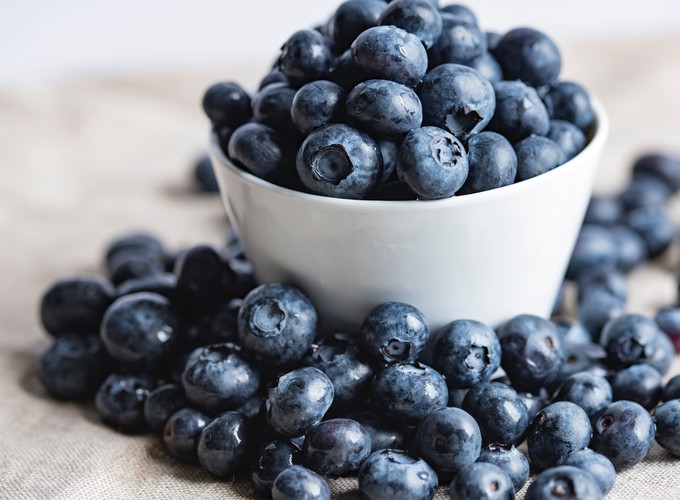One of the highlights of my day is the smoothie I drink after finishing my workout, usually around mid-day after having fasted for the morning with water and black coffee.
It tastes like a dessert and keeps me satiated until dinner. Even if everything I eat for the rest of the day is less-than-healthy, I can be confident that I’ve covered a lot of the essentials in this single meal.
Recipe
- 3 cups water
- 2 cups frozen mixed berries (any kind you like: strawberries, blackberries, blueberries, cherries, etc.)
- 1 10oz package of frozen spinach
- 1 cup oats (“regular” rolled oats)
- 1 banana
- 1 scoop Barbell Medicine Vegan protein powder or Vivo Life Perform
- 2 tbsp chia seeds
- 2 tsp Ceylon cinnamon
- 1 tsp (5g) creatine monohydrate
Dump the water, then everything else, into a high-speed blender like a Vitamix, and blend until smooth. You may want to break the brick of frozen spinach into 4 or more pieces, or thaw it in the fridge ahead of time, to reduce the strain on the blender.
This yields a 48 oz (6 cups) drink, which is a decent amount of hydration in addition to all of the benefits listed below.
Macronutrient summary
- 800 kcal
- 135g of carbs, including 30g of fiber
- 50g of protein
- 15g of fat
Water vs. plant milk
I used to substitute some of the water with 1-2 cups of soy milk, but I got tired of schlepping half-gallons of it from the grocery store every 4 days. Since most of it is water anyway, it’s significantly more expensive to ship to the store and bulky and heavy to carry it home. I’ve found that straight-up water doesn’t really affect the flavor or texture that much.
Each cup of soy milk would provide another 7g of protein and another 4g of fat.
If it’s fortified, it likely has your daily RDA of vitamin B12, to assuage any fears about “vegan B12 deficiency.” Animal products are typically fortified with B12 because they don’t manufacture it and may not get enough B12 from soil bacteria depending on their diet. Why not “skip the middleman” and supplement it direclty yourself?
B12 deficiency isn’t a vegan problem, although it’s often incorrectly characterized that way by people arguing against plant-based diets. About 40% of Americans are B12-deficient regardless of diet. Whether via a multivitamin, a B12 supplement, or fortified foods, everyone should be supplementing their B12 intake.
Features
This meal meets several daily nutrient goals:
- Protein: 50g of protein is about 1⁄3 of my daily requirements to maximize hypertrophy in concert with strength training (1.6 g/kg bodyweight). If you’re sedentary, it likely meets half of a your daily protein requirements, conservatively.
- Creatine: The 5g of creatine monohydrate provides neurological and cognitive benefits to everyone, even if you don’t do any athletic training.
- Leucine: The 4g of leucine maximizes the muscle protein synthesis response to the meal.
- Fiber: 30 grams of it. This is twice the average under the Standard American Diet (SAD), and it’s the entire RDA for a 2000-calorie diet.
- Omega-3 fatty acids: The chia seeds provide over twice the RDA for omega-3s to help reduce systemic inflammation.
Fiber
The high fiber content could cause GI distress if you’re not yet eating a high-fiber diet. Skipping the banana and using half the amounts of oats, berries, and spinach will remove 10-15g of the fiber, which you could gradually titrate up over a few days to the normal amount. Consuming adequate fiber will improve your life more than any trendy “superfood.”
Cost
- The organic berry mixes I get are about $12 for 7 cups, so that comes out to about $3.50 per day.
- One scoop of protein powder runs about $2-3 regardless of brand.
- Oats are pretty cheap, generally. $1.00 for this daily cup, maybe? They’re probably half that in bulk.
- Chia seeds are cheap, too: $0.18 per day.
- The creatine is about $0.13 per day.
- What could a banana cost? $10?
In total, this smoothie will set you back about $7-8 per day. That’s not cheap, but it’s also not bad considering its nutrient density, compared to a restaurant meal or a frozen pizza.
Since the berries are half the cost, you could save a bit by using non-organic berry mixes. The organic ones are all that are available from my neighborhood grocery store.
Flexibility
It won’t affect your health if you’re out of bananas for a day or two. I’ve skipped buying bananas for weeks at times and survived just fine. When I temporarily ran out of protein powder, I doubled the oats to help mitigate the loss of protein and amino acids.
You can adjust the amounts of each ingredient to optimize for cost, consistency, or flavor. Try different mixtures of berries, or go for straight-up blueberries if you prefer. Frozen cherries, and cherry-berry blends, are delicious if you can find them. Research and improvise!
If you love peanut butter in smoothies and can afford the extra fat content, go for it. Be sure to use natural peanut butter – 2 ingredients maximum, unless it’s salt-free – the palm oil in the much-loved name brands is unhealthy and environmentally destructive.
The most important principle here is consistency. Please get at least this much nutrition, most importantly this much fiber, every day.
